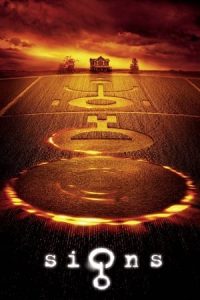- Source: May 2002 lunar eclipse
The Pianist (2002)
The Bourne Identity (2002)
Irreversible (2002)
Signs (2002)
Star Wars: Episode II – Attack of the Clones (2002)
Return to Never Land (2002)
Queen of the Damned (2002)
Harry Potter and the Chamber of Secrets (2002)
Spider-Man (2002)
The Moon (2023)
2001: A Space Odyssey (1968)
No More Posts Available.
No more pages to load.
A penumbral lunar eclipse occurred at the Moon’s descending node of orbit on Sunday, May 26, 2002, with an umbral magnitude of −0.2871. A lunar eclipse occurs when the Moon moves into the Earth's shadow, causing the Moon to be darkened. A penumbral lunar eclipse occurs when part or all of the Moon's near side passes into the Earth's penumbra. Unlike a solar eclipse, which can only be viewed from a relatively small area of the world, a lunar eclipse may be viewed from anywhere on the night side of Earth. Occurring about 3.1 days after perigee (on May 23, 2002, at 11:30 UTC), the Moon's apparent diameter was larger.
Visibility
The eclipse was completely visible over Australia, the Pacific Ocean, and Antarctica, seen rising over much of Asia and setting over much of North America and western South America.
In popular culture
This eclipse appears in the 2022 film Turning Red, although it differs from actual events. It is depicted as taking place on the evening of 25 May, rather than the early morning hours of 26 May. Additionally, the film takes place in Toronto, where the total eclipse was not visible.
Eclipse details
Shown below is a table displaying details about this particular solar eclipse. It describes various parameters pertaining to this eclipse.
Eclipse season
This eclipse is part of an eclipse season, a period, roughly every six months, when eclipses occur. Only two (or occasionally three) eclipse seasons occur each year, and each season lasts about 35 days and repeats just short of six months (173 days) later; thus two full eclipse seasons always occur each year. Either two or three eclipses happen each eclipse season. In the sequence below, each eclipse is separated by a fortnight. The first and last eclipse in this sequence is separated by one synodic month.
Related eclipses
= Eclipses in 2002
=A penumbral lunar eclipse on May 26.
An annular solar eclipse on June 10.
A penumbral lunar eclipse on June 24.
A penumbral lunar eclipse on November 20.
A total solar eclipse on December 4.
= Metonic
=Preceded by: Lunar eclipse of August 8, 1998
Followed by: Lunar eclipse of March 14, 2006
= Tzolkinex
=Preceded by: Lunar eclipse of April 15, 1995
Followed by: Lunar eclipse of July 7, 2009
= Half-Saros
=Preceded by: Solar eclipse of May 21, 1993
Followed by: Solar eclipse of June 1, 2011
= Tritos
=Preceded by: Lunar eclipse of June 27, 1991
Followed by: Lunar eclipse of April 25, 2013
= Lunar Saros 111
=Preceded by: Lunar eclipse of May 15, 1984
Followed by: Lunar eclipse of June 5, 2020
= Inex
=Preceded by: Lunar eclipse of June 15, 1973
Followed by: Lunar eclipse of May 7, 2031
= Triad
=Preceded by: Lunar eclipse of July 26, 1915
Followed by: Lunar eclipse of March 26, 2089
= Lunar eclipses of 2002–2005
== Saros 111
=Lunar Saros 111, repeating every 18 years and 11 days, has a total of 71 lunar eclipse events including 11 total lunar eclipses. The first total lunar eclipse of this series was on 19 April 1353, and last was on 4 August 1533. The longest occurrence of this series was on 12 June 1443 when the totality lasted 106 minutes.
= Metonic series
=First eclipse: May 26, 2002.
Second eclipse: 26 May 2021.
Third eclipse: 26 May 2040.
Fourth eclipse: 27 May 2059.
= Half-Saros cycle
=A lunar eclipse will be preceded and followed by solar eclipses by 9 years and 5.5 days (a half saros). This lunar eclipse is related to two partial solar eclipses of Solar Saros 118.
See also
List of lunar eclipses
List of 21st-century lunar eclipses
References
External links
Saros cycle 111
2002 May 26 chart: Eclipse Predictions by Fred Espenak, NASA/GSFC
http://www.eclipse.org.uk/eclipse/1132002/




















